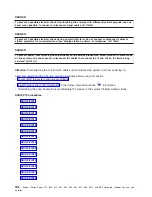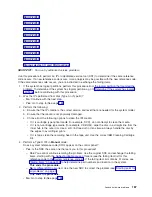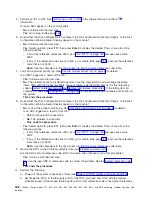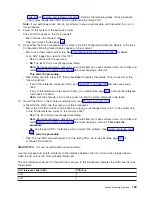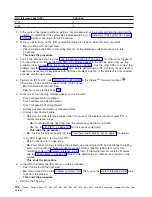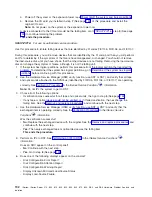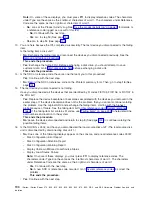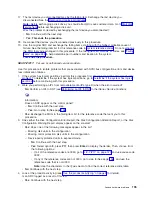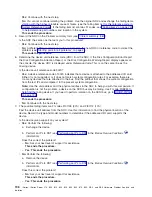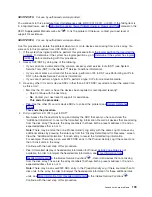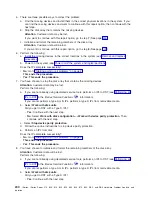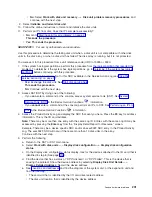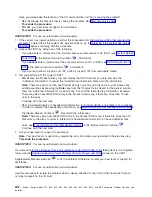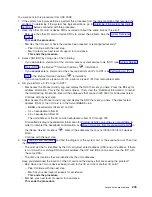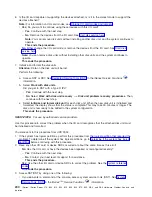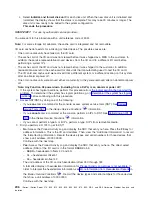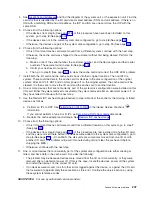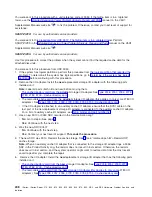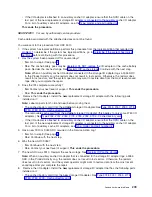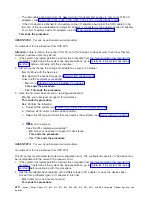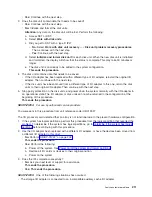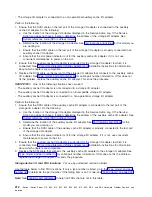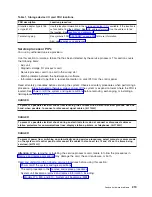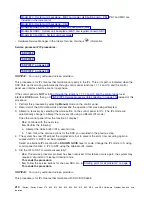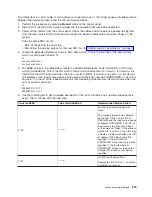
5.
There
are
three
possible
ways
to
correct
the
problem:
a.
Find
the
missing
devices
and
install
them
in
the
correct
physical
locations
in
the
system.
If
you
can
find
the
missing
devices
and
want
to
continue
with
this
repair
option,
then
continue
with
the
next
step.
b.
Stop
the
disk
array
that
contains
the
missing
devices.
Attention
:
Customer
data
may
be
lost.
If
you
want
to
continue
with
this
repair
option,
go
to
step
7
(See
page
c.
Initialize
and
format
the
remaining
members
of
the
disk
array.
Attention
:
Customer
data
will
be
lost.
If
you
want
to
continue
with
this
repair
option,
go
to
step
8
(See
page
6.
Perform
the
following:
a.
Install
the
missing
devices
in
the
correct
locations
in
the
system
(see
b.
Power
on
the
system
(see
Does
the
IPL
complete
successfully?
v
No
:
Go
to
This
ends
the
procedure.
v
Yes
:
This
ends
the
procedure.
7.
You
have
chosen
to
stop
the
disk
array
that
contains
the
missing
devices.
Attention
:
Customer
data
may
be
lost.
Perform
the
following:
a.
If
you
are
not
already
using
dedicated
service
tools,
perform
an
IPL
to
DST
(see
in
the
iSeries
Service
Functions
information).
If
you
cannot
perform
a
type
A
or
B
IPL,
perform
a
type
D
IPL
from
removable
media.
b.
Select
Work
with
disk
units
.
Did
you
get
to
DST
with
a
Type
D
IPL?
v
Yes
:
Continue
with
the
next
step.
v
No
:
Select
Work
with
disk
configuration
—>
Work
with
device
parity
protection
.
Then,
continue
with
the
next
step.
c.
Select
Stop
device
parity
protection
.
d.
Follow
the
on-line
instructions
to
stop
device
parity
protection.
e.
Perform
an
IPL
from
disk.
Does
the
IPL
complete
successfully?
v
No
:
Go
to
This
ends
the
procedure.
v
Yes
:
This
ends
the
procedure.
8.
You
have
chosen
to
initialize
and
format
the
remaining
members
of
the
disk
array.
Attention
:
Customer
data
will
be
lost.
Perform
the
following:
a.
If
you
are
not
already
using
dedicated
service
tools,
perform
an
IPL
to
DST
(see
in
the
iSeries
Service
Functions
information).
If
you
cannot
perform
a
type
A
or
B
IPL,
perform
a
type
D
IPL
from
removable
media.
b.
Select
Work
with
disk
units
.
Did
you
get
to
DST
with
a
Type
D
IPL?
v
Yes
:
Continue
with
the
next
step.
200
iSeries:
iSeries
Server
270,
800,
810,
820,
825,
830,
840,
870,
890,
SB2,
and
SB3
Hardware
Problem
Analysis
and
Isolation

